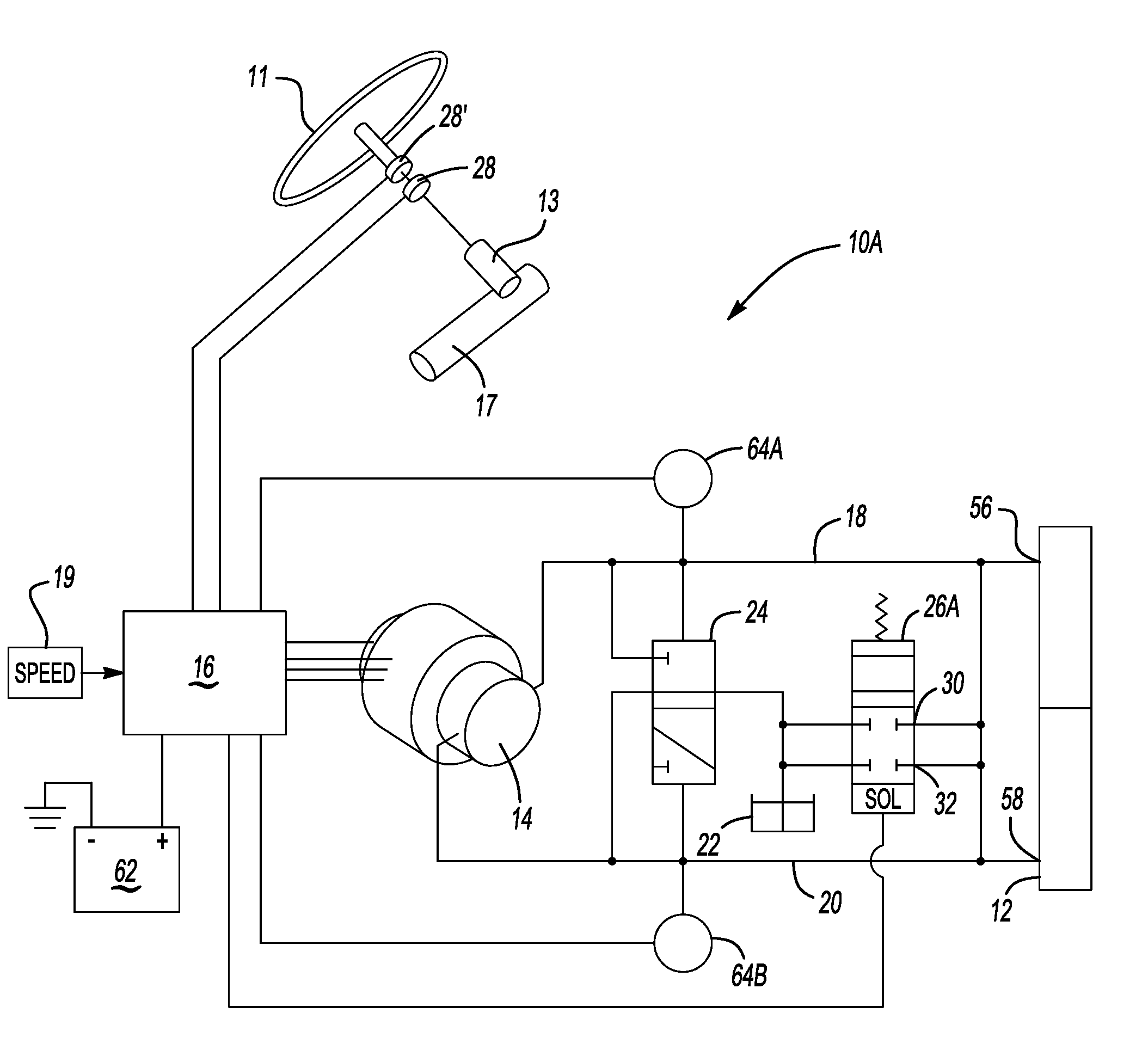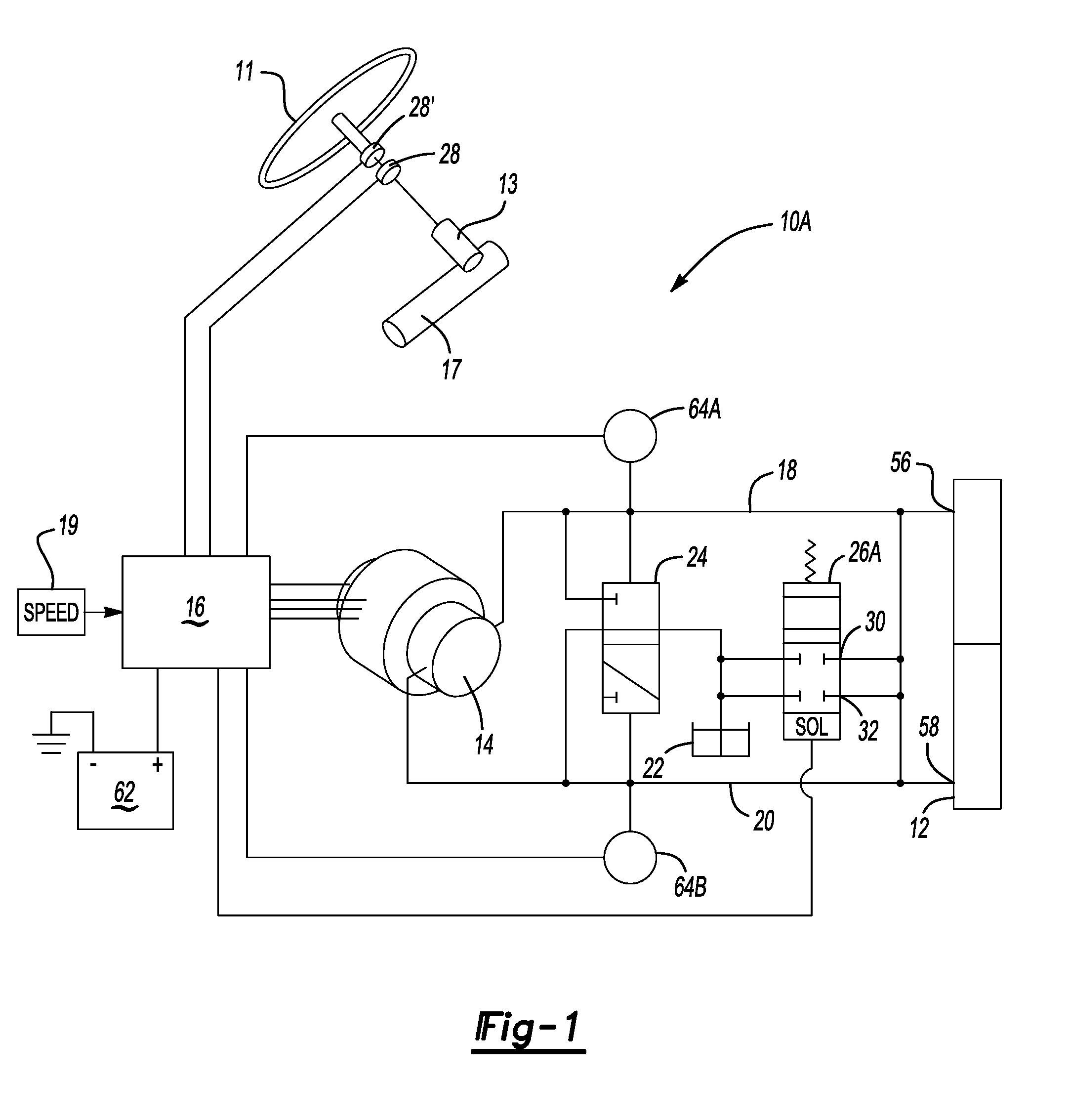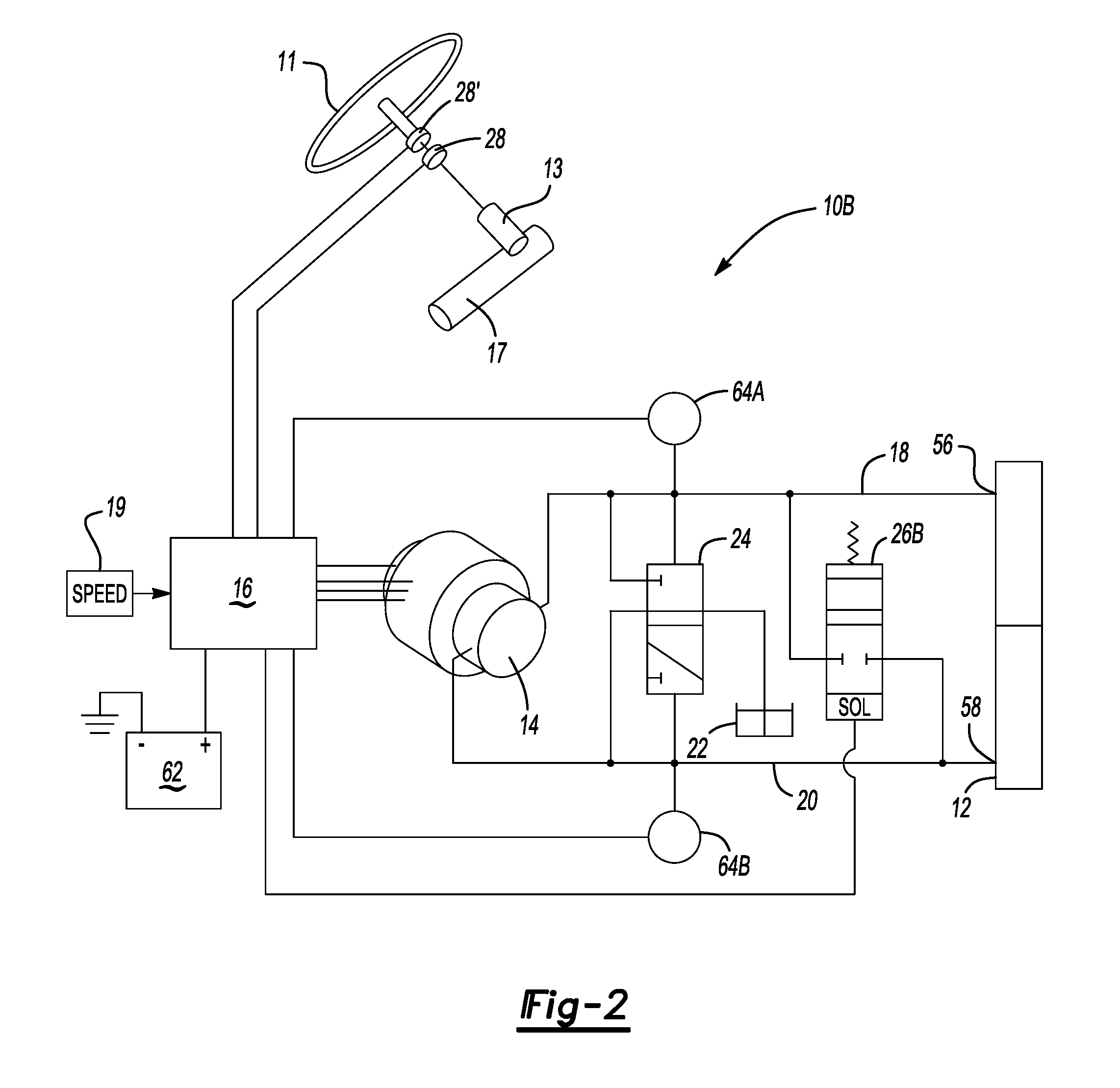Hydro-Mechanically Coupled Electric Power Steering System
a technology of electric power steering and mechanical coupling, which is applied in mechanical devices, valve operating means/releasing devices, transportation and packaging, etc., can solve the problems of fluid pressure spike that is transmitted to the steering wheel, undesirable impulse to the steering wheel of the host vehicle, etc., and achieve the effect of improving the steering feel
- Summary
- Abstract
- Description
- Claims
- Application Information
AI Technical Summary
Benefits of technology
Problems solved by technology
Method used
Image
Examples
Embodiment Construction
[0016]One example of a hydro-mechanically coupled power steering system 10A is shown schematically in FIG. 1. FIG. 1 depicts most of the elements of the hydro-mechanically coupled power steering system of the '254 patent. A steering wheel 11 is connected to the steerable wheels (not shown) by a suitable steering gear 13 engaged (directly or indirectly) with a gear rack 17. A torque sensor 28 is connected to the steering wheel 11 and generates an electrical or electronic signal representative of the magnitude and direction of a steering torque applied to the steering wheel 11. A secondary torque sensor 28′ provides a redundant torque signal utilized in a fail-safe function for the power steering system 10A. The application of an applied steering torque to the steering wheel 11, as sensed by the torque sensor 28, results in the application by the power steering system 10A of an assisted steering force to the steerable wheels.
[0017]The power steering system 10A includes a power cylinde...
PUM
 Login to View More
Login to View More Abstract
Description
Claims
Application Information
 Login to View More
Login to View More - R&D
- Intellectual Property
- Life Sciences
- Materials
- Tech Scout
- Unparalleled Data Quality
- Higher Quality Content
- 60% Fewer Hallucinations
Browse by: Latest US Patents, China's latest patents, Technical Efficacy Thesaurus, Application Domain, Technology Topic, Popular Technical Reports.
© 2025 PatSnap. All rights reserved.Legal|Privacy policy|Modern Slavery Act Transparency Statement|Sitemap|About US| Contact US: help@patsnap.com



